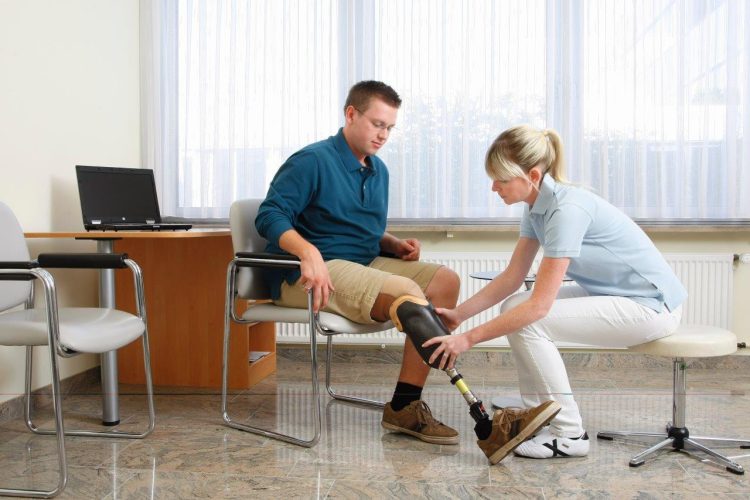
When prosthetic sockets are fitted, your prosthetist will often make what is called a 'check (test) socket' first; a clear see-through socket which enables the prosthetist to see any pressure areas or redness. A 'check socket' can easily be changed (modified) to suit your shape, wearability and comfort if required. That way, when the final socket is made the fit should be more comfortable for you.
It is not unusual for sockets to feel strange at first – keep in mind that a movable body part is being housed in a hard shell. When you are first fitted with a prosthetic socket it is likely that it will feel unusual. Adjusting to taking pressure through a different surface of your body when standing and walking, for example: the shin bone and back of the lower leg instead of the sole of the foot (for a below knee amputee) may take you some time to get used to.
In the early stages, wearing a prosthesis may cause some discomfort and redness to the skin. However this should not be the case in the long term.
For a prosthesis to work well it is important that the socket is a ‘good’ fit. In fact, it is hard to think of anything else you might wear that has to fit as well, and for as long, as the socket of a prosthesis. This is due to the fact that our bodies and stumps are living things which are constantly changing in size and shape. Your prosthesis, however, is an object which is fixed in size and shape.
For lower limb amputees, the prosthetic socket usually consists of a liner (or stump sock), a weight bearing (hard) outer wall which forms the connection to other components such as knee joints and prosthetic feet. Similarly, the socket for upper limb amputees forms a connection to other components such as elbow and wrist joints or hands. The liner or stump sock helps to protect the skin inside the hard shell of the socket. The liner works to minimise friction and rubbing between skin and the socket.
A poorly fitting socket in LOWER limb amputees can;
A poorly fitting socket in UPPER limb amputees can;
You do it in two ways. Firstly, by trying to minimise changes in your stump. This includes; maintaining your diet and regular exercise; and, secondly by constantly reviewing how you feel in your prosthesis, checking the skin and contacting your prosthetist if you notice a change.
You should never use your prosthesis if it doesn’t feel right.
Some people’s residual limbs don’t change. They wear the same limb and suspension system day in day out without any problems, while others will need to make several adjustments over the course of the day. Speak to your prosthetist about problem solving ideas which may be helpful for you.
Keep up to date with our latest news, events and information